Seeing patterns in things is a reassuring thing. It comforts us to feel that something, some experience, has an underlying purpose, even if that purpose is not clear to us at the time. We trust that it is so. All across the world, in different places and in different cultures, women are weaving. Women have been doing so for thousands of years, creating cloth from the wool of their herds or from other plants and animals to make into clothing, or baskets, or blankets. They might be spinning on a simple hand-held spindle while they watch over the same herds which provide what they spin, or they might be sitting outside using a portable back-strap loom, or using a large frame loom in their house. I myself have done my own share of weaving at the loom.
All of these women, wherever they live or have lived, are creating different things, using different patterns, distinctive to their times and cultures. But perhaps there is a sense in which they are actually creating the same thing. The activity is the same, however it is produced. What connects these women is that they are all weavers. They are all familiar with the warp and weft of the loom – the vertical and horizontal threads which create the weaving.
We readily recognise this warp and weft which creates the weave of our own life’s experiences: pain and pleasure, loathing and delight, sorrow and rejoicing, regret and anticipation. Darkness and light are also part of this pattern, and the pattern tells us that the weaving would not be possible, would not even exist, without both of these experiences. But what is the weaving?
Perhaps a network, all-unseen, connects all women who weave, and who have ever woven. The common activity is in itself enough for a connection to be made. Perhaps through this connection one vast weaving is being created, a weaving whose mysterious form we might glimpse through the creative activity of all these individual women. And as long as there are women, the warp holds. As long as the warp holds, we can weave our world into wellness. We are all weavers, weaving at the loom of the world. From our sorrow and our love, from pain and forgiving, from all the darkness and the light, the weaving of love takes form.
Copper Cascade by Donna Sakamoto Crispin


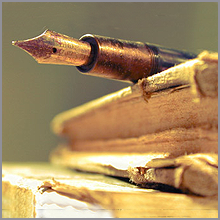
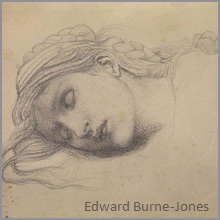
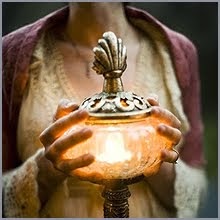
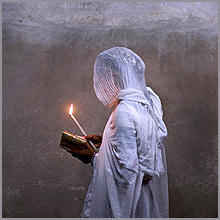
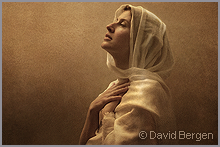
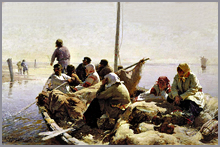
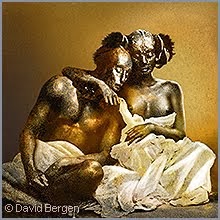


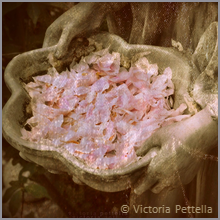
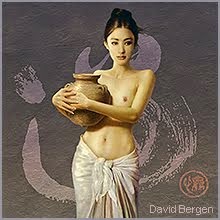

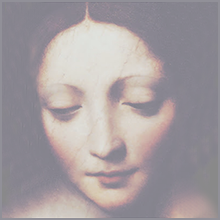
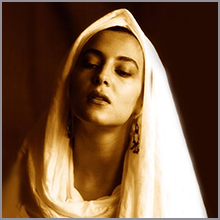
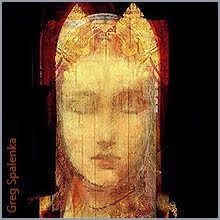
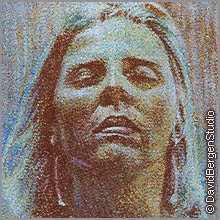











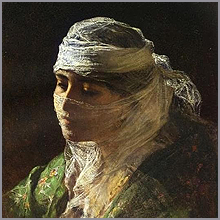
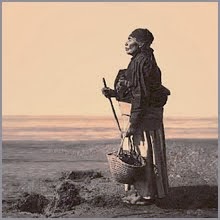

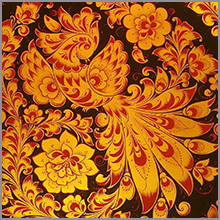

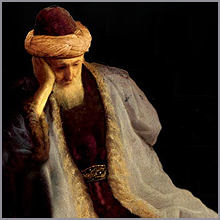
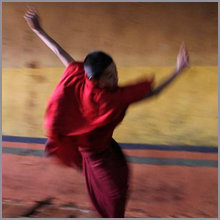




A very interesting blog! I like the comment Emma has made, "Seeing patterns in things is a reassuring thing. It comforts us to feel that something, some experience, has an underlying purpose, even if that purpose is not clear to us at the time..." The most incredible patterns may be found in nature. With our present technologies we can peer into dimensions too small for bare human eyes or capture the swirl of enormous galaxies from distances that boggles our imagination. But patterns can be found everywhere we look, even in the most mundane things - we see patterns in the petals of flowers, the veins in leaves, the spiral of a snail's shell, the oblong shape of eggs, in a spider's web.... the list goes on. So women who weave, like nature herself, become creators as well. Patterns can also be auditory, and various frequencies are combined together to create music that expresses much beauty and inspires us. Emma hints at the end of her blog we are all creators, we are all weavers of our our lives and experiences. The polarities we experience including good and bad, pain and pleasure, sorrow and joy Emma calls the "warp and weft" of our lives. We are indeed weavers of our lives. We may be given a difficult material to work with but we have the choice and opportunity to create something of beauty and value from it. The "Copper Cascade" is captivating, and has an ethnic feel to it. For me it has a very Japanese feel and embodies elements that are both rustic and modern.
ReplyDeleteWhat a wonderful reaction, Joseph! You are weaving whole galaxies, music, flowers, leaves, eggs, snake-skins and more into this tapestry - you are definitely sitting at the loom of the world using the most interesting patterns in the most beautiful colours. Thank you so much.
ReplyDeleteA beautiful awareness. I have often thought of our lives as a tapestry the Divine is weaving, the warp and woof we sometimes sense, the beauty of the colours, the feel of the textures. All part of the tapestry of our life, of all life.
ReplyDeleteJoceline, your comment speaks to me, for they instantly reminded me of the words by Etty Hillesum which she wrote in her diary in 1942: "But this one thing becomes more clear to me: that you can't help us, but we need to help you and by doing that we also help ourselves. And this is the only thing that we can save now and also the only thing that matters: a piece of you in ourselves, God." I think that God still needs our help at the loom! ♥
Delete